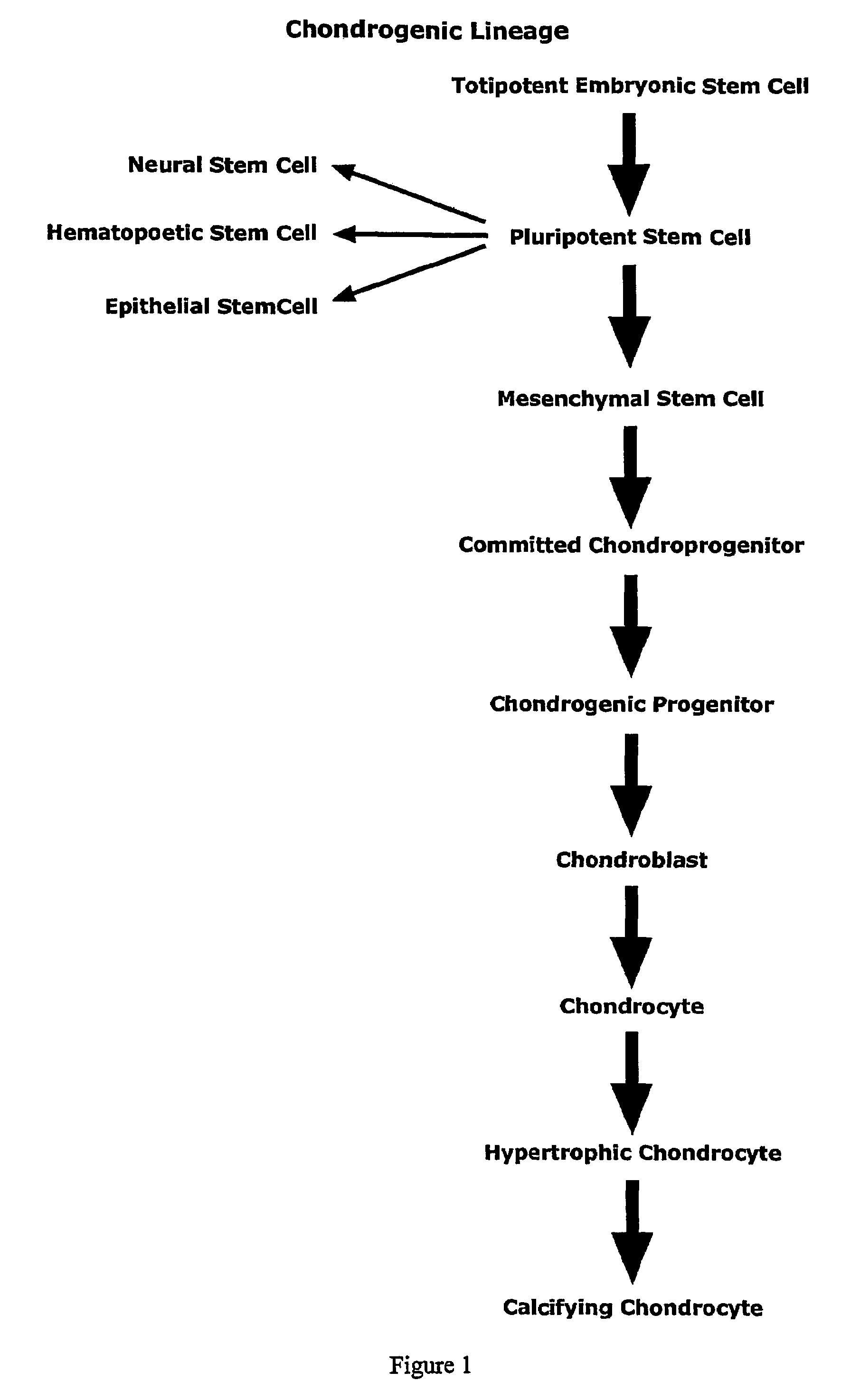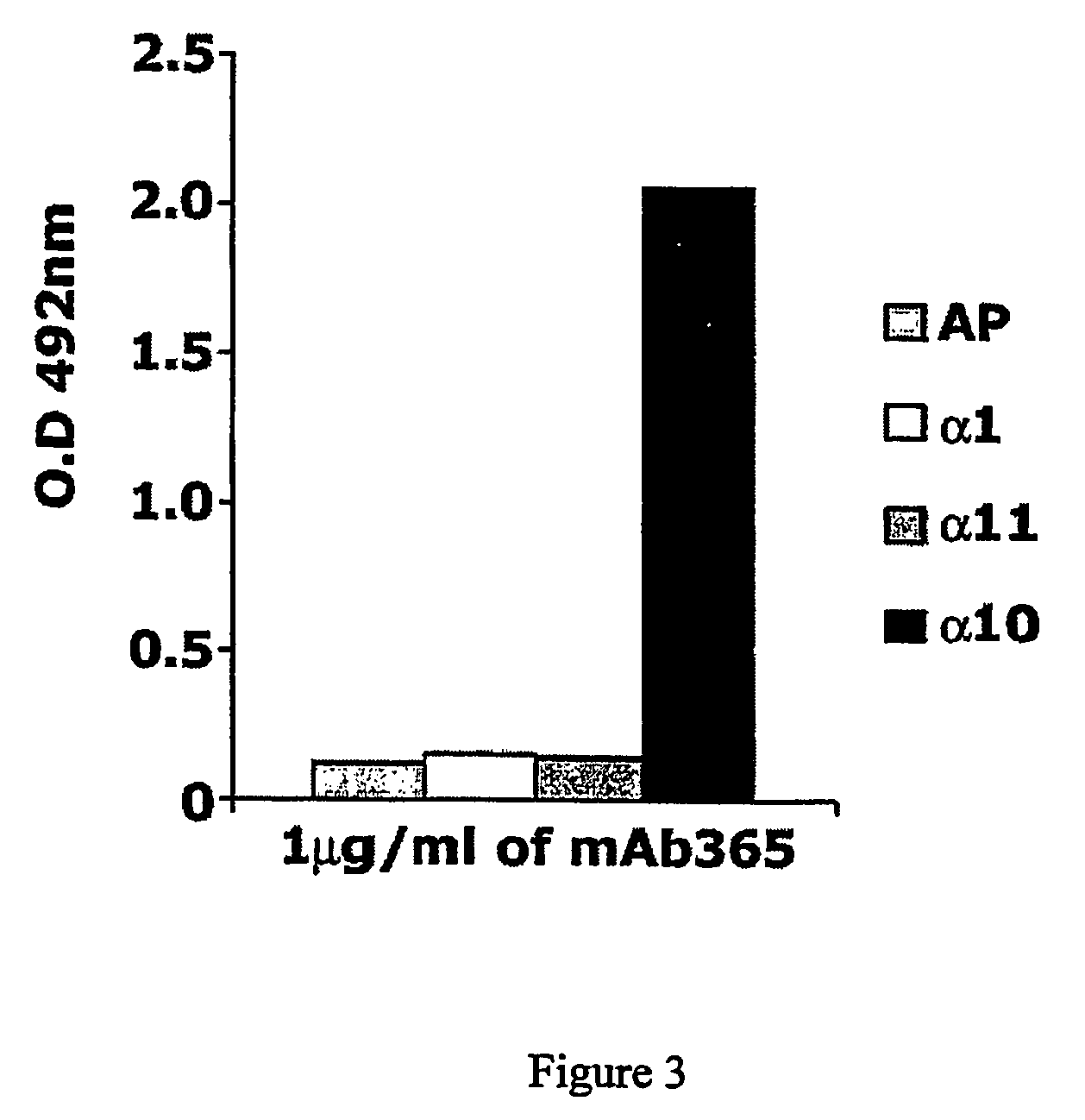Monoclonal antibody capable of binding integrin alpha 10 beta 1
a technology of integrin and antibody, applied in the field of monoclonal antibodies capable of binding integrin alpha 10 beta 1, can solve the problems of limited use of rabbits, reducing their therapeutic applicability, and cartilage having a very poor reparative response to injury
- Summary
- Abstract
- Description
- Claims
- Application Information
AI Technical Summary
Benefits of technology
Problems solved by technology
Method used
Image
Examples
example 1
Generation of Clone 365
Objective
[0395]The objective with this example was to generate a monoclonal antibody against the I-domain of the extracellular domain of alpha10.
Materials and Methods
[0396]The Antigen
[0397]For the production of a monoclonal antibody specific for alpha10 integrin, alpha10 knockout mice were immunized with recombinant alpha10 I-domain purified from an alpha10 I-domain-expressing cell line. The cell line was generated by transfecting HEK 293-EBNA cells with the expression vector pCEP4 coding for His-tagged alpha10 I-domain alone or fused to alkaline phosphatase (AP).
[0398]The recombinant proteins have been designed so that they were secreted into the culture medium from where they were affinity purified on NiNTA agarose (Qiagen). Purity was confirmed by electrophoresis.
[0399]Immunisation
[0400]Mice were immunized intramuscularly with 2-10 μg alpha10 I-domain-alkaline phosphatase fusion protein mixed with the mouse adjuvant Immuneasy (Qiagen). Fifteen days later th...
example 2
Immunoprecipitation of Integrin Alpha10beta1 with the Antibody 365
Objective
[0406]The objective with this example was to demonstrate the specificity of the antibody 365 for the whole integrin (alpha10beta1) by immunoprecipitation (IP).
Materials and Methods
[0407]In the following experiment, polyclonal antibodies against the cytoplasmic domains of integrin subunits alpha10 and alpha11 were used as control antibodies. These polyclonal antibodies had previously been shown to specifically immunoprecipitate integrins alpha10beta1 and. alpha11beta1 respectively from cell lysates.
[0408]C2C12 cells transfected with integrin subunit alpha10 or alpha11 (negative control) were grown in DMEM medium with 10% FCS. Cells adherent on the plate were washed once with PBS and then surface biotinylated using 0.5 mg / ml Sulfo-NHS-LC-biotin (Pierce) in 4 ml PBS for 20 min on ice. Cells were then washed once with PBS and 10 ml 0.1M glycine / PBS were added for 5 min on ice. After washing once with PBS cells we...
example 3
ELISA
Objective
[0410]The objective with this example was to demonstrate the specificity of the antibody 365 for the I-domain of the integrin alpha10 chain by ELISA (enzyme linked immunosorbent assay).
Materials and Methods
[0411]Soluble recombinant I-domain (10 μg) of alpha10, alpha11, alpha1 or control protein (alkaline phosphatase) was coated in a 96 well ELISA plate (Maxisorp Nunc) overnight in PBS.
[0412]Hybridoma culture supernatant containing approximately 1 μg / ml of the antibody 365 was applied and specific binding of the antibody to alpha10 I domain was detected by horseradish peroxidase-conjugated goat anti-mouse IgG and subsequently peroxidase substrate (OPD SigmaFast, Sigma). The absorbance of the colorimetric change was determined at 492 nm.
Results
[0413]The results in FIG. 3 confirm that the antibody 365 specifically recognises the I-domain of the integrin subunit alpha10. No reactivity was observed with control (AP) or the I-domains of the integrin alpha1 and alpha11.
PUM
| Property | Measurement | Unit |
|---|---|---|
| weight | aaaaa | aaaaa |
| density | aaaaa | aaaaa |
| density | aaaaa | aaaaa |
Abstract
Description
Claims
Application Information
 Login to View More
Login to View More - R&D
- Intellectual Property
- Life Sciences
- Materials
- Tech Scout
- Unparalleled Data Quality
- Higher Quality Content
- 60% Fewer Hallucinations
Browse by: Latest US Patents, China's latest patents, Technical Efficacy Thesaurus, Application Domain, Technology Topic, Popular Technical Reports.
© 2025 PatSnap. All rights reserved.Legal|Privacy policy|Modern Slavery Act Transparency Statement|Sitemap|About US| Contact US: help@patsnap.com



